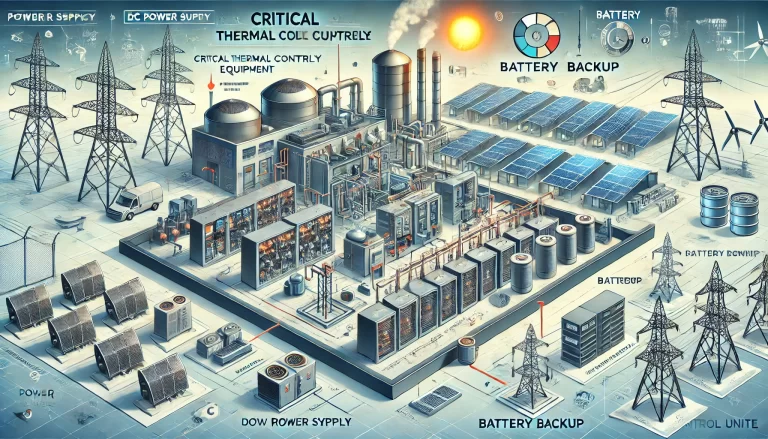Introduction
In the realm of industrial automation, analog signals—representing continuously changing physical quantities—play a pivotal role in process control, monitoring, and data acquisition. Unlike digital signals, which are discrete, analog signals can take an infinite number of intermediate values, offering a more precise reflection of real-world changes. As Industry 4.0 and smart manufacturing evolve, analog technology faces new opportunities and challenges. This article aims to provide a comprehensive analysis of the current status of analog signals in industrial automation, explore the key technologies involved, and forecast future trends, offering valuable insights for researchers and practitioners in the field.

1. Fundamental Concepts and Characteristics of Analog Signals
Analog signals refer to continuous physical quantities that vary within a specific range, such as temperature, pressure, and flow rate. Unlike digital signals, which are discrete and represented by binary values, analog signals can assume an infinite number of intermediate values, allowing for a more accurate reflection of real-world phenomena. In industrial automation, analog signals are typically represented in the form of voltage, current, or resistance and are characterized by their continuity and infinite divisibility.
The main distinction between analog and digital signals lies in their representation and processing. Digital signals are discrete and can only take a finite set of values, often encoded in binary form, whereas analog signals are continuous and can represent an infinite number of values. Analog signals are commonly used in industrial control systems where precision is essential, such as in temperature regulation, pressure control, and flow measurement. However, analog signals are more susceptible to noise and interference, necessitating specialized signal processing techniques to ensure accuracy and reliability.
2. Applications of Analog Signals in Industrial Automation
Analog signals play a critical role in various industrial automation applications. Below are some key areas where analog signals are indispensable:
Process Control: In chemical production, for instance, precise control of reactor temperature, pressure, and flow is essential for ensuring stable production and consistent product quality. These parameters are typically analog signals. Analog sensors and controllers are used to monitor and adjust these parameters in real time, ensuring the process remains within optimal operating conditions.
Sensor Technology: Analog sensors are crucial for converting physical measurements into electrical signals. For example, temperature sensors, pressure sensors, and flow sensors are widely used across industrial environments. These sensors provide continuous data inputs to control systems, enabling real-time monitoring and regulation. In HVAC systems, for instance, temperature sensors continuously monitor ambient temperature and transmit analog signals to controllers for precise temperature adjustments.
Data Acquisition Systems: Analog signals are central to modern industrial data acquisition systems, which consist of modules that receive and process signals from various sensors. These systems must sample, quantify, and encode analog signals, converting them into digital form for computer processing. In precision manufacturing, for example, the system processes signals from high-accuracy sensors to ensure precise control of the machining process. The challenge here lies in handling multiple analog signals from different sensors with high accuracy and efficiency.

3. Signal Processing Techniques for Analog Signals
Proper signal processing is essential for ensuring the accuracy and reliability of analog signals in industrial automation. Key techniques include:
Signal Conditioning: This is the first step in processing analog signals, transforming raw sensor output into standardized signals suitable for further processing. Common signal conditioning techniques include amplification, attenuation, isolation, and linearization. For example, in temperature measurement using thermocouples, the weak voltage signal must be amplified and compensated for cold-junction temperature to obtain accurate temperature readings. Signal conditioning not only improves signal quality but also enhances the system’s immunity to noise and interference.
Filtering: Analog signals often contain unwanted noise and interference, especially in industrial environments prone to electromagnetic interference (EMI) and power supply noise. Filtering techniques, such as low-pass, high-pass, band-pass, and band-stop filters, are used to remove this noise. For instance, in motor control systems, pulse-width modulation (PWM) signals generate high-frequency noise that can be filtered out using a low-pass filter to extract the useful analog signal.
Analog-to-Digital Conversion (ADC): Converting analog signals into digital form is crucial for modern industrial systems. ADCs must operate with high precision and speed, especially in high-accuracy applications. In industries requiring ultra-precise measurements, such as metrology and laboratory testing, 16-bit or even 24-bit ADCs are employed to ensure microvolt-level precision. Techniques like oversampling and noise shaping are used to further enhance ADC performance, expanding the dynamic range and improving accuracy.

4. Future Trends in Analog Technology
As industrial applications continue to demand higher precision and efficiency, several key trends are shaping the future of analog technology:
Precision Enhancement: With increasing demands for accuracy in industrial automation, analog sensors and signal processing technologies are evolving. For instance, next-generation high-precision temperature sensors are capable of achieving a resolution of 0.01°C, catering to industries requiring precise control, such as pharmaceuticals and precision manufacturing. Additionally, high-resolution ADCs and low-noise amplifiers are pushing the boundaries of analog signal accuracy.
Intelligent Systems: The integration of intelligence into analog technologies is another major trend. Smart sensors now integrate signal conditioning, data processing, and communication capabilities into a single unit. For example, smart pressure sensors not only measure pressure but also perform temperature compensation and self-diagnostics, significantly enhancing system reliability and ease of use. The application of artificial intelligence (AI) in analog signal processing, such as predictive maintenance and fault detection through machine learning algorithms, is poised to revolutionize industrial automation.
Networking and IoT Integration: As industrial automation moves toward Industry 4.0, the need for networked systems is becoming increasingly critical. Traditional analog signal transmission methods are often vulnerable to interference and require complex wiring. However, networking solutions based on industrial Ethernet and wireless technologies are improving signal robustness and enabling remote monitoring and distributed control. In smart factories, analog sensors connected to Industrial IoT (IIoT) platforms can share data and enable coordinated control, boosting productivity and flexibility. The widespread adoption of 5G technology will further enhance the real-time transmission and processing of analog signals, facilitating the development of more advanced automation systems.

5. Conclusion
Analog technology remains an indispensable part of industrial automation, with applications spanning process control, sensor technology, and data acquisition systems. As the industry moves toward higher precision, smarter systems, and networked environments, analog technologies continue to evolve, presenting new opportunities and challenges. The fusion of analog and digital technologies will drive the next generation of industrial automation, enhancing measurement accuracy, system intelligence, and remote monitoring capabilities. Ongoing research and development in analog technologies will play a pivotal role in advancing industrial automation, making it essential for professionals to stay attuned to emerging trends in the field.
